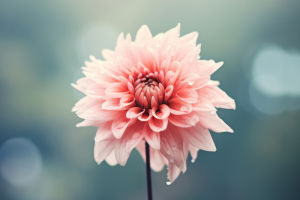In modern homes, indoor decorative plants not only add beauty but also improve air quality and create a comfortable living environment.
However, regular maintenance is essential for these plants to grow healthily. First, it is crucial to choose plants that are suitable for your living environment.
Each plant has different requirements for light, temperature, and humidity, so understanding their characteristics before purchasing can help avoid later troubles.
Light is one of the important factors affecting plant growth. Most indoor plants need bright but indirect sunlight, such as diffuse light or south-facing windowsills.
At the same time, some plants adapt well to low-light environments, like certain types of aloe and snake plants, which are suitable for darker rooms. Adjusting the position of plants to receive the right light, especially when the seasons change, can help them stay healthy.
Watering is another important maintenance task. Different plants have different water requirements. Generally speaking, it is best to keep the soil moist but not waterlogged. Overwatering can easily lead to root rot, while insufficient water will cause the plant to wilt.
Observing the leaves and soil of your plants is a good way to determine if they need watering. Usually, watering is necessary when the top layer of soil is dry. In winter, many plants slow down their growth, so watering should be reduced to avoid waterlogging and root problems.
Fertilization is also an important part of promoting plant growth. Indoor plants typically need additional nutrients during the growing season to support their growth and flowering.
Choosing the right fertilizer and applying it according to the instructions can effectively enhance the plant's vitality. When fertilizing, it is important to avoid overdosing, as too much fertilizer may burn the roots and negatively affect the health of the plant.
Air humidity is another key factor in the healthy growth of indoor plants. Many plants, especially tropical varieties like ferns and orchids, prefer a humid environment.
If the indoor air is too dry, you can increase humidity by misting, using a humidifier, or placing a basin of water around the plant. Regularly checking the leaves of the plant is essential; if you notice dry or yellowing leaf tips, it is usually a sign of insufficient humidity.
Preventing and treating pests and diseases is also vital for maintaining indoor plants. Common pests include aphids, whiteflies, and spider mites, which not only damage the plants' appearance but can also lead to plant death.
Regularly inspecting the leaves and stems of plants allows for timely action when problems arise, such as using natural pesticides or manually removing pests. Furthermore, keeping the area around the plants clean can reduce the chances of pest infestations.
Repotting is a necessary step in the maintenance of indoor plants. As plants grow, their roots can fill the potting soil, leading to insufficient nutrients and poor water drainage.
It is generally recommended to repot plants once a year or every two years, selecting a slightly larger new pot and using fresh soil to provide adequate growing space and nutrients. When repotting, handle the roots carefully and avoid excessive pruning to ensure that the plants can quickly adapt to their new environment.
Lastly, observing the growth status of the plants is crucial for effective maintenance. Each plant has its specific growth pattern. By closely observing their leaf color, shape, and overall health, you can detect problems early.
Regularly cleaning dead and yellow leaves not only beautifies the environment but also helps prevent the occurrence of diseases and pests. Engaging with plants enhances their growth and strengthens your connection to nature.
The maintenance of indoor decorative plants involves various aspects, such as lighting, watering, fertilization, humidity, pest and disease prevention, repotting, and observation.
Only through careful care and regular inspections can these plants thrive in indoor spaces, ultimately achieving the goal of beautifying the environment and improving quality of life. Caring for plants is not just a responsibility; it is a pleasure. By nurturing plants, you can experience the power and beauty of life.


